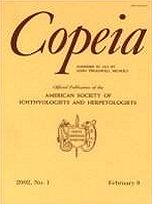Image analysis was used to measure feeding angles of Labeotropheus trewavasae, Labeotropheus fulleborni, Melanochromis auratus, Metriaclima zebra, Petrotilapia spp., Pseudotropheus c.f. elongatus, Tropheops tropheops, and Tropheops gracilior videotaped in Lake Malawi. Petrotilapia spp. fed on vertical, slanted, and horizontal slopes, T. gracilor grazed on vertical slopes approximately 60% of the time, and the other species spent at least 80% of the time feeding on horizontal slopes. The median feeding angles ranged from 35° to 90°. There are four significantly different groups of feeding angles among the eight rock-dwelling species that were examined: (1) L. trewavasae (35°), (2) L. fulleborni, M. auratus, and P. elongatus (44.8–48.5°), (3) T. tropheops (58.4°), and (4) Petrotilapia spp., T. gracilior, and M. zebra (84.2–90.2°). Feeding angles within a species did not vary with location or differences in fish community structure. Feeding angles were associated with a combination of mouth position and head shape. We hypothesized that feeding angles may be important in differential access to food.
How to translate text using browser tools
1 May 2006
An Investigation of the Utility of Feeding Angles Among Lake Malawi Rock-dwelling Cichlids (Teleostei: Cichlidae)
Jay R. Stauffer Jr.,
Isa Posner
ACCESS THE FULL ARTICLE





